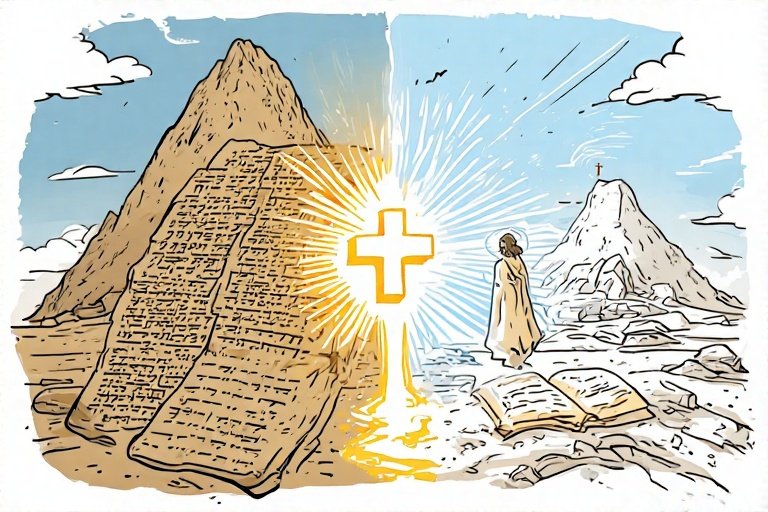📜 Is the Old Covenant Obsolete? Understanding the Shift to the New

For many Christians, the terms Old Testament and New Testament are so familiar that we forget what they actually mean. But behind these names lies a major theological truth: "Testament" means "Covenant", and the Bible teaches that one covenant has replaced another.
Let’s take a closer look at what Scripture says about the Old Covenant, the New Covenant, and whether the old one is now obsolete.
📚 What Does "Testament" Mean?
The word testament comes from the Latin testamentum, which early translators used for the Greek word diathēkē (διαθήκη), meaning covenant. In Hebrew, the equivalent is berith (בְּרִית). So, when we speak of the Old Testament, we’re really talking about the Old Covenant—and likewise, the New Testament refers to the New Covenant.
📜 What Was the Old Covenant?
- Established between God and Israel at Mount Sinai through Moses.
- Contained the Ten Commandments, ceremonial laws, sacrifices, and temple rituals.
- Required strict adherence to the Law in order to maintain God’s favor.
- Administered by a priesthood offering repeated sacrifices for sin.
This covenant had a very real purpose: it revealed human sin, established a theocratic nation, and foreshadowed something greater.
✝️ What Is the New Covenant?
The New Covenant was prophesied in Jeremiah 31:31–34 and fulfilled in Jesus Christ.
- Instituted by Jesus at the Last Supper (Luke 22:20).
- Built on grace, not works of the Law.
- Offers forgiveness of sins through the once-for-all sacrifice of Christ (Hebrews 10:14).
- Writes God’s law on human hearts, not stone tablets (Hebrews 8:10).
- Provides direct access to God through Christ as the High Priest.
🔍 Does the Bible Say the Old Covenant Is Obsolete?
Yes, and it says so plainly.
“In speaking of a new covenant, he has made the first one obsolete. And what is becoming obsolete and growing old is ready to vanish away.”
— Hebrews 8:13 (ESV)
This verse makes it clear: when God brought in the New Covenant, the Old was made obsolete—not because it was bad, but because its purpose had been fulfilled.
⚖️ Was the Old Covenant Useless?
Not at all.
“So then, the law was our guardian until Christ came, in order that we might be justified by faith.”
— Galatians 3:24 (ESV)
The Old Covenant was like a teacher or guide, preparing people to recognize their need for a Savior. It pointed to Christ, but it was never the final solution.
✅ Summary: What's Obsolete—and What's Fulfilled
- The Old Covenant is no longer binding for those under the New Covenant in Christ.
- It served a vital role, but its sacrificial system, priesthood, and ceremonial laws have been fulfilled in Jesus.
- Christians live under a better covenant, established on better promises (Hebrews 8:6).
🧠 Final Thought
Understanding the difference between the Old and New Covenants isn’t just theological trivia—it changes how we read the Bible, how we view salvation, and how we live as believers today. The Law showed us our need. Grace gives us the remedy. And in Christ, we live under a covenant that will never grow old.
✍️ Stay Connected with Grandpa Pulse
Crypto hustler • Market cycles explorer • Faith & finance from a front-porch philosopher

📲 Follow me on social:
🐦 X (Twitter)
💬 Blurt.blog
📺 YouTube
Posted Using INLEO
